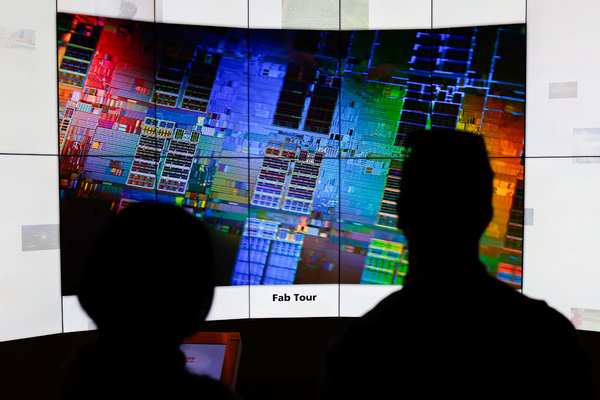Managing the risks and opportunities of Agentic AI
Mark Scrivens at FPT Corporation explains the steps needed to keep businesses safe when using agentic AI

Now that organisations have familiarised themselves with Chat-GPT as an intro to Generative AI, its close relation, Agentic AI, has emerged to drive unprecedented transformation across industries. More than just a tool for automating repetitive tasks, Agentic AI unlocks new avenues for innovation and creativity and is expected to be an even more powerful phenomenon.
In the new generation of AI-driven business, it’s critical that business leaders and those newly accountable for this technology area have a clear understanding of how they can manage its potential. Agentic AI is far from being a plug-and play technology and requires many things to line up for success.
In fact, IDC predicts worldwide spending on AI-supporting technologies will more than double to $749 billion by 2028. This means looking at what infrastructure is needed to support the safe and beneficial use of Agentic AI. This will be a challenge for all organisations, with key considerations such as transparency, robust security, human oversight, and user empowerment.
What makes Agentic AI special
Now that GenAI has revolutionised the way we create content, Agentic AI will now take GenAI a stage further – to automate even more complex processing tasks. Starting from a more advanced perspective, it powerfully draws on multiple agents to autonomously learn and adapt to give rapid automated decisions.
Unlike traditional reinforcement learning, which starts from scratch without prior knowledge or reasoning, Agentic AI can bypass much of the extensive learning phase due to its inherent reasoning capabilities. Agentic AI leverages Large Language Models (LLMs) as powerful reasoning engines that can send commands to existing tools via APIs, which enables it to perform actions and learn through trial and error. It can act within an environment and receive feedback to strengthen its decisions and effectiveness.
When tasks become complex, multiple LLMs can collaborate as specialised agents in a role-playing dynamic, enhancing reasoning and leading to more accurate decisions. Although it is less well suited to tasks requiring human empathy, creativity, physical dexterity, and complex ethical judgements, the applications predicted for Agentic AI in the near future are vast.
Real-world Agentic AI use cases
There are already existing applications across industries that demonstrate how Agentic AI is reshaping businesses to be smarter, faster, and more resilient. As citizens and customers across many industries, we can expect to see the direct benefits of enhanced service provision over the next year.
In banking, financial services and insurance alone, Agentic AI is now proven in transforming risk assessment, claims management, fraud detection, and hyper-personalised services. It has reduced the bank loan application process for a top 10 global bank from around six days to under 24 hours. It has also transformed supply chain management, reducing purchase order response times from weeks to minutes.
It can also streamline the HR process for onboarding and other admin tasks, as well as support data retrieval and process assist to speed up approval and resolution timelines. For industries reliant on machinery, it predicts failures, reduces maintenance costs, boosts uptime, and extends asset lifespans.
As enterprises race to transform their digital capabilities, Agentic AI in software development can provide intelligent code suggestions, identify patterns, and enhance coding standards, enabling developers to work smarter and deliver better quality code faster. Agentic AI in threat detection tools is becoming central to cybersecurity strategies, detecting risks, responding instantly, and automating recovery to protect data and minimise downtime.
Infrastructure requirements for Agentic AI
As with any new technology, to enable Agentic AI’s rise and evolution, there will be some significant infrastructure required. On one hand, it will scale up, consuming substantial GPU resources to manage extensive computations and data processing. On the other hand, it will become more specialised and efficient, enabling niche models with domain-specific knowledge to run on smaller devices.
This means that low-level hardware optimisations, such as AI-specific silicon designed for the unique computational needs of Agentic AI, will be essential for accelerating its development and large-scale deployment. Additionally, advancements in in-memory technologies and interconnects will support the massive data processing and communication needs of Agentic AI systems, ensuring optimal performance across diverse platforms.
Considerations for trusted use of AI
Yet effectively deploying Agentic AI will require addressing the biggest AI ethical concerns like bias mitigation, transparency, security and privacy. Added to this, technical advancements in learning algorithms, perception and hardware will also be crucial. Developing effective human-AI collaboration, including skill augmentation and continuous learning, is also essential.
It goes without saying that clear data practices and cybersecurity are essential. There is also the issue of potential emergent behaviour, as AI systems become more complex and can display unexpected behaviours. Therefore, control and safety aspects will be a priority for AI development. Working through these and other considerations will develop trust and viability of Agentic AI as a safe and beneficial technology.
Ensuring the safe and beneficial use of Agentic AI
Since using AI relies on expert human training to be effective, it’s critical for business leaders to understand some key steps to utilising Agentic AI in a responsible way that benefits their organisation. Some fundamental steps to lining things up for success include:
1 Finding the right skills
Only projects with the right technology skills will be effective. Enterprises will need to look for a technology partner that has global delivery capabilities with a deep understanding of local markets. Looking at emerging tech hubs which have future-ready software engineers and ambitions to lead in AI will ensure a large-scale project can stay on track. This means looking for a technology partner that has delivered successful AI projects for customers across a wide variety of industry needs.
2 A clear data strategy
Getting an organisation’s data in order is a major first step. This means having a clear strategy to gain, extract and analyse the vast amount of data across the business for meaningful business insights. For decades, enterprises have focused analytics strategies on structured data, which can be stored and analysed neatly in charts. Yet many of the best context-specific details useful for Agentic AI are found in unstructured formats, typically spread across many siloed servers, collaboration tools and archives. One emerging strategy, RAG (Retrieval Augmented Generation), can turn this data into knowledge so that it can work with AI to enhance their decision making and drive innovation.
3 Effective human-AI collaboration
Agentic AI requires a perfect blend of technology and human tech expertise, combined with working culture and work ethic. Being customer-first in design is essential to deliver new applications and services that really work for customers and tech users. Developing effective human-AI collaboration, including skill augmentation and continuous learning, is therefore essential for optimal Agentic AI outcomes.
The right culture for Agentic AI success
Agentic AI promises a gear shift for many businesses. Yet only with the right approach and digital tech innovation will business leaders be best placed to succeed with AI implementations in the challenging second half of this decade and beyond.
Over time, Agentic AI will begin to manifest itself in the physical world, perhaps driving robotics to make decisions and operating effectively in complex physical environments that only years ago was pure fiction. For today, tech leaders must put in some essential pre-AI investment to move forward in a way that carefully considers customers, the business and the planet.
Mark Scrivens is FPT Software UK Chief Executive Officer at FPT Corporation
Main image courtesy of iStockPhoto.com and Supatman

Business Reporter Team
Most Viewed
Winston House, 3rd Floor, Units 306-309, 2-4 Dollis Park, London, N3 1HF
23-29 Hendon Lane, London, N3 1RT
020 8349 4363
© 2025, Lyonsdown Limited. Business Reporter® is a registered trademark of Lyonsdown Ltd. VAT registration number: 830519543





